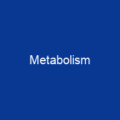Glucose: The Sweet Core of Life Imagine the world without sugar—impossible, right? But what if we zoomed into one particular sugar molecule that’s not just sweet but essential for life itself? That’s glucose!
The Journey of Glucose
First isolated by Andreas Marggraf in 1747, this humble molecule has a rich history. It was Emil Fischer who later determined its structure and predicted possible isomers, earning him the Nobel Prize in Chemistry in 1902. But glucose’s significance extends far beyond its discovery; it’s a cornerstone of life itself!
From Plants to Animals
Plants produce glucose through photosynthesis, converting sunlight into energy stored as sugar. This sugar is then used by plants to make cellulose and by all living organisms to produce energy in the form of ATP (adenosine triphosphate). In animals, glucose is stored as glycogen and released from its breakdown, circulating in the blood as blood sugar.
Types and Forms
Glucose comes in various forms: dextrose monohydrate, anhydrous dextrose, α-D-glucopyranose, β-D-glucopyranose, and more. Its structure allows it to exist both as a linear open-chain molecule and a cyclic form due to the presence of alcohol and aldehyde functional groups.
The Chemistry of Glucose
Glucose is a hexose, one of sixteen aldohexose stereoisomers. It’s obtained by hydrolysis of carbohydrates such as milk sugar, cane sugar, maltose, cellulose, glycogen, and more. Its chemical properties include being highly soluble in water but poorly soluble in methanol and ethanol.
Physical Properties
Glucose melts at 146 °C (α) and 150 °C (β), decomposes starting at 188 °C with release of volatile products, has a pKa value of 12.16 at 25 °C, and is classified as a hexose. Its glass transition temperature is 31 °C (88 °F) and the Gordon–Taylor constant is 4.5.
The Life of Glucose
Glucose is not just a molecule; it’s a building block for disaccharides, oligosaccharides, and polysaccharides. Its stability makes it less glycated with proteins than other aldohexoses, making it the most abundant natural monosaccharide.
Metabolism and Storage
In humans, glucose is stored in the liver as glycogen and converted into glucose 6-phosphate, which cannot leave the cell. Excess glucose is broken down into fatty acids and stored as triglycerides. Kidneys reabsorb glucose via SGLT1 and SGLT2, with 90% of kidney glucose reabsorption via SGLT2.
Energy Production
Glycolysis generates energy through oxidative decarboxylation, the citric acid cycle, and the respiratory chain. Muscular lactate enters the liver for gluconeogenesis (Cori cycle), replenishing glycogen stores, and acetyl-CoA is used for fatty acid synthesis with a high glucose supply.
Glucose in Industry
The commercial production of glucose involves enzymatic hydrolysis using glucose amylase or acids, resulting in a worldwide annual production volume of 20 million tonnes (as of 2011). Maltodextrin contains about 20% glucose. Many crops can be used as sources of starch, including maize, rice, wheat, cassava, potato, barley, sweet potato, corn husk, and sago.
Commercial Uses
Glucose is mainly used in the production of fructose, glucose-containing foods as a sweetener and humectant, fermentation to ethanol in alcoholic beverages, and confectionery products like candies, toffee, and fondant. Commercial uses include high-fructose corn syrup (HFCS), soft drinks with varying levels of HFCS (55% in the US), organic acid production through fermentation, and biotechnological applications such as producing bioactive natural products and inducing hypoglycemia in cancer treatment.
Detection Methods
Glucose detection methods include nuclear magnetic resonance spectroscopy, X-ray crystallography analysis, lectin immunostaining, and historical qualitative detection reactions like the Fehling test, Tollens test, Barfoed test, Nylander’s test. Instrumental quantification includes refractometry and polarimetry for carbohydrate concentrations, photometric enzymatic methods in solution (glucose oxidase and peroxidase), photometric test-strip method employing enzyme conversion to gluconic acid and hydrogen peroxide, amperometric glucose sensor using anodic oxidation of hydrogen peroxide produced by glucose oxidase, optical probes based on boronic acids for intracellular applications, selective glucose-binding proteins like Concanavalin A.
Conclusion
In essence, glucose is more than just a sugar; it’s the backbone of life itself, powering everything from plants to humans. Its journey through history and its role in our bodies make it an indispensable molecule. Understanding glucose means understanding the very essence of energy and life! 
You want to know more about Glucose?
This page is based on the article Glucose published in Wikipedia (retrieved on January 27, 2025) and was automatically summarized using artificial intelligence.







